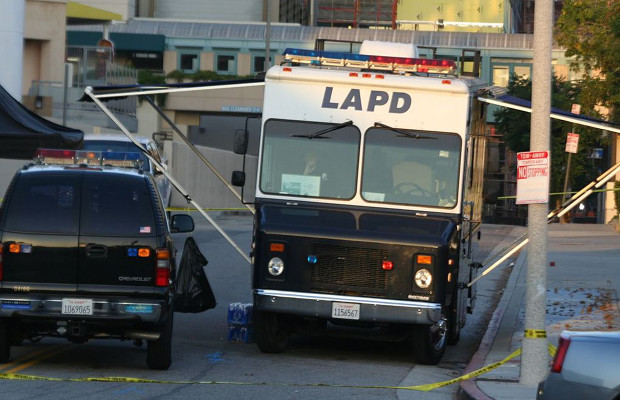
Legal
Data Links LA Crime Spikes To Cannabis Dispensary Closures
Recent research shows that Los Angeles, California’s 2010 mass closure of “unregistered” dispensaries was associated with a significant crime spike in the surrounding area — not just immediately in front of the closed shops, but blocks away.
A new study published in the Journal of Urban Economics found that the closure of more than 400 Los Angeles, California medical cannabis dispensaries in 2010 caused an increase in crime activity for blocks.
Study authors, Tom Y. Chang and Mireille Jacobson, discussed their findings in the Harvard Business Review. They said they looked at the wave of dispensary closures that hit Los Angeles at the turn of the decade because the number of shops closing offered a meaningful data set with an array of variables to consider.
From the HBR:
“The fact that the closings were based on a very arbitrary registration process that took place several years prior allowed us to use the closings as a natural experiment to estimate the causal impact of MMDs on crime.”
These findings are another crushing blow to the rapidly crumbling notion that storefront dispensaries are a threat to public safety. The researchers discovered that closing dispensaries wasn’t just associated with a significant increase in crime right in front of the closed shops, but with a crime spike felt blocks away.
The researchers stressed that these findings aren’t just interesting — they fly in the face of the prohibitionist narrative on dispensaries.
“Our results demonstrated that the dispensaries were not the crime magnets that they were often described as, but instead reduced crime in their immediate vicinity. And when breaking down the effect by types of crime, we found that the increases in crime after dispensary closures were driven by the types of crime most plausibly deterred by bystanders: property crime and theft from vehicles.”
NORML Deputy Director, Paul Armentano, said these findings are unsurprising and comport with previous data on the matter.
“These conclusions are consistent with prior research indicating that dispensaries contribute to neighborhood safety by hiring doormen and taking other steps to deter local criminal activity,” he said. “Such well-regulated establishments can play a positive role in the improved safety and wellness of a community.”
Another major finding was how walkable the neighborhood is coming into play. The researchers checked the walk score of all the closed shops and found it had a major impact on the results; the dispensaries in areas with low walk scores saw the biggest jump in crime, because the customer base of those dispensaries was providing a natural form of incidental surveillance usually absent from areas with low foot traffic.
And these findings aren’t unique to cannabis dispensaries: The study also analyzed temporary restaurant closures by the LA Department of Public Health to see if they had the same impact on crime in surrounding neighborhoods — they did.
“We found essentially the same pattern as we did with MMDs: The area immediately around a closed restaurant experienced an increase in property crime and theft from vehicles, relative to areas around restaurants that were either recently reopened or about to be closed.”
We reached out to top pot academic, Dr. Amanda Reiman, to get her take on how the whole “dispensaries are bad for the neighborhood” thing kicked off in the first place.
“The public safety argument largely stems from fear of cannabis consumers and a likening to criminal behavior,” Reiman said. “In the early days of dispensaries, and some places even now, opponents compare the clientele to those in substance abuse treatment centers and halfway houses… of course, the view of who uses cannabis continues to evolve and erode the fear of the consumer.”
Marijuana Policy Project Senior Communications Manager, Morgan Fox, wasn’t surprised by the findings. He said that legal cannabis isn’t just cleaning up the illicit market but also the communities it serves.
“When there are fewer people doing business in the area, fewer security cameras, fewer security guards and fewer witnesses to deter potential criminals, it creates an environment in which crime can flourish,” Fox said. “Legal, regulated marijuana businesses don’t just take crime out of the marijuana market — they help prevent it in their immediate vicinity.”
Fox added that, despite the lack of evidence supporting prohibitionist myths like the link between dispensaries and crime, they continue to this day.
“I’ve heard people saying that illicit traffickers are using the legal industry for cover, but I haven’t seen any cases where that was actually occurring. Nevertheless, the argument persists,” he said. “These kind of claims rarely require proof for people to believe them, often because the people parroting them are authority figures. Unfortunately, the gateway theory still has legs for the same reason.”
Josh Drayton, Deputy Director of the California Cannabis Industry Association, has been handling all things LA for regulated pot’s lobby arm. He says he expects there is still some work to be done in breaking SoCal’s stigmas around cannabis.
“I still hear a lot of the same old arguments, even though this is a great study and great research” he said. “I hope it’s getting there but it’s a heavy lift… we’re dealing with 100 years of propaganda, turning that tide takes time and studies just like this one.”
Reiman said that fostering wider acceptance of legal cannabis — an industry often stifled at the municipal level — is an excellent mechanism for positively impacting public safety.
“What is left is the very real truth about urban development and public safety: Empty buildings attract criminal activity, as do streets with little lighting and foot traffic. When any business vacates a building and no one moves in, conditions for criminal activity increase,” Reiman said. “The more that cannabis businesses are viewed as legitimate and no different than other businesses, the easier it will be for cities to create policies that actually improve public safety, such as addressing vacant buildings, and work with the cannabis industry on community development.”
TELL US, is there a dispensary in your neighborhood? Has it affected the crime rate?


























